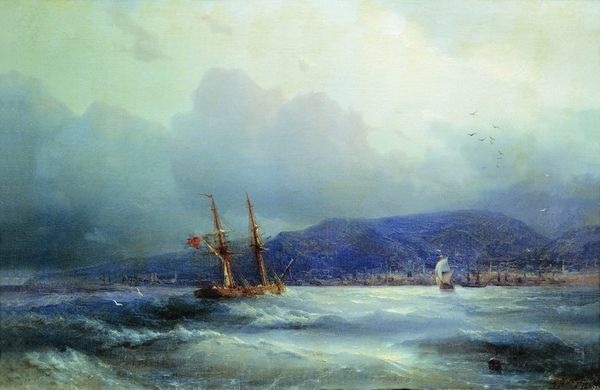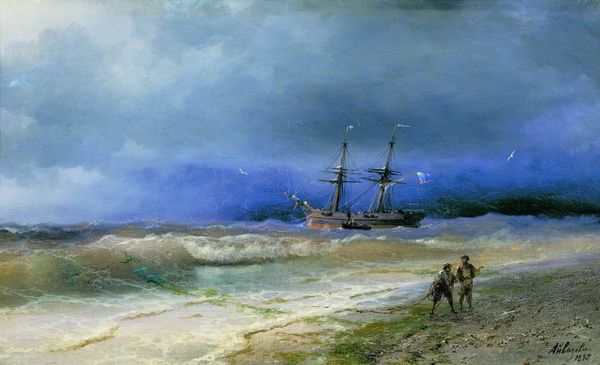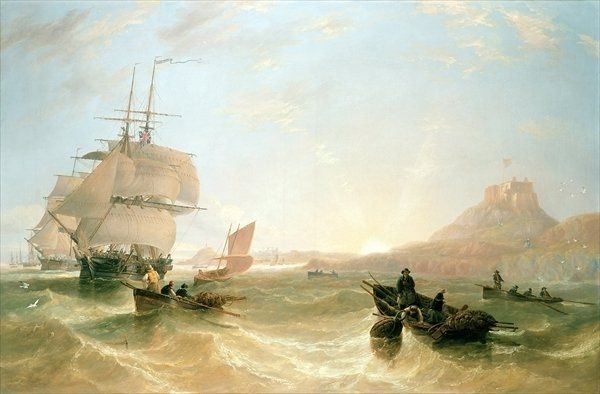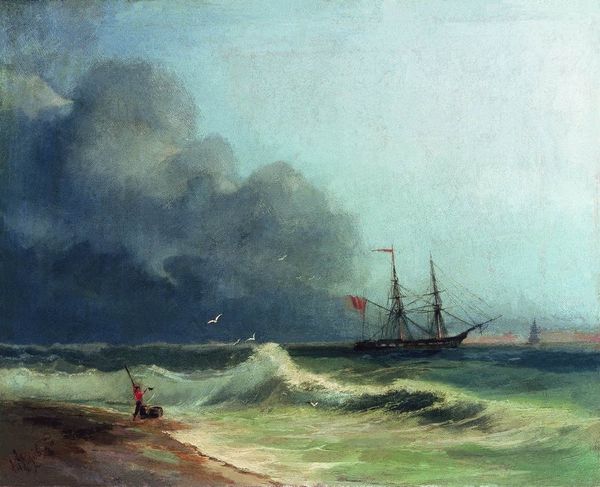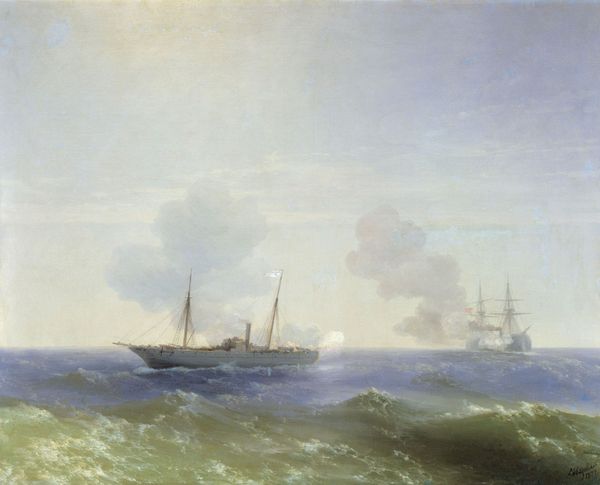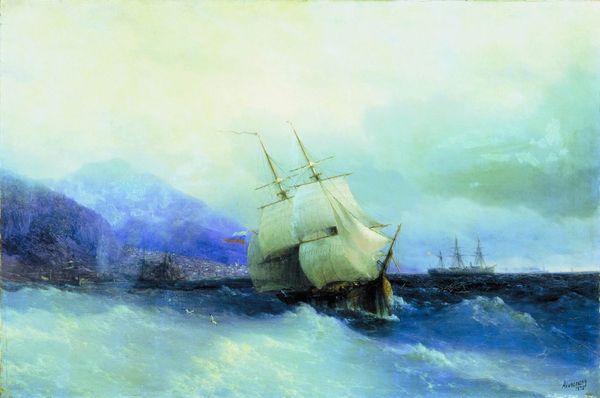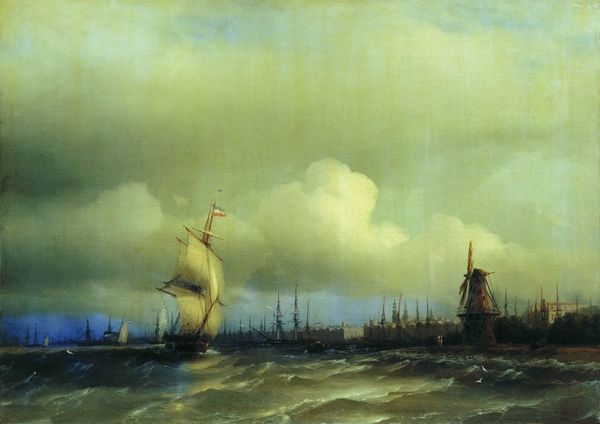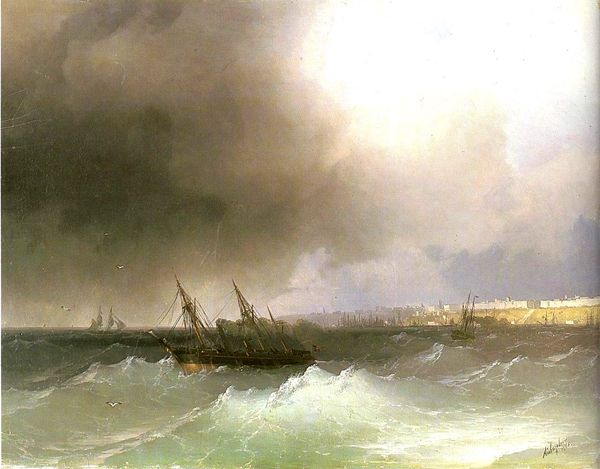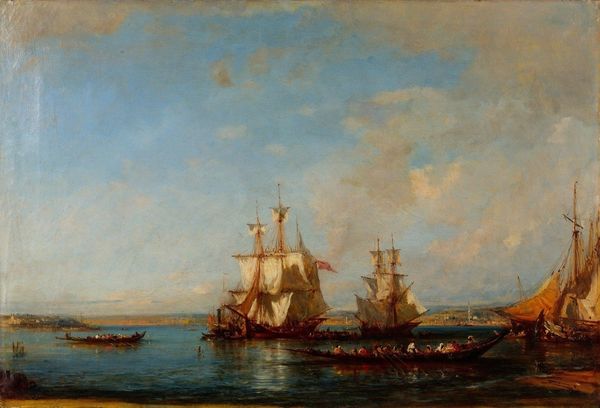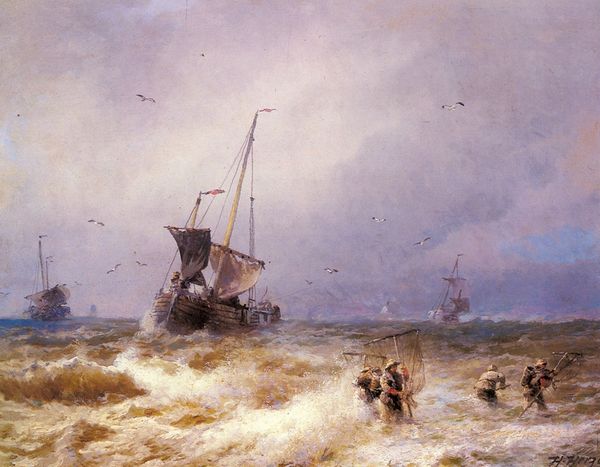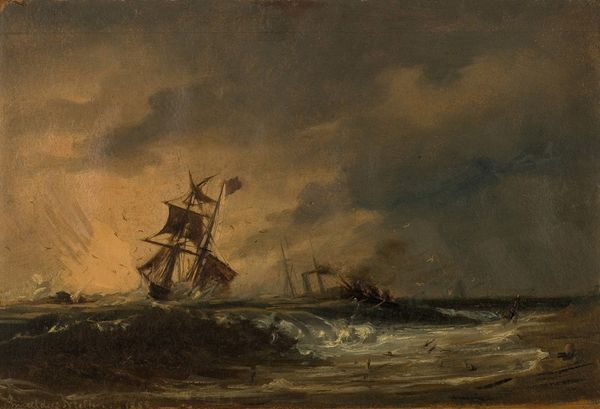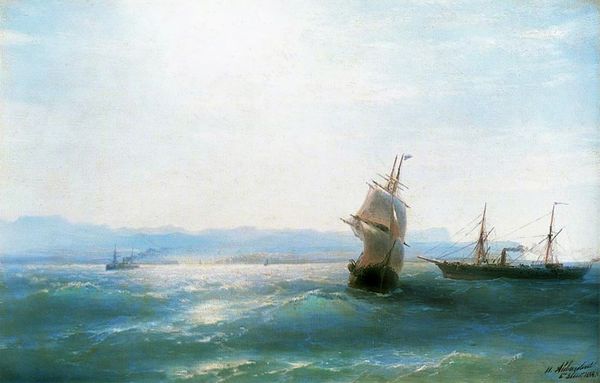
Copyright: Public domain
Editor: Here we have Aivazovsky’s “Fleeing from the Storm,” created in 1872 using oil paints. The roiling sea dominates, dwarfing the ships and the pier. I’m curious about how he achieved such a powerful sense of movement and danger. What do you see in this piece? Curator: This painting speaks volumes about the materials used, how they were employed, and the social realities underpinning its creation. Consider the materiality of oil paint itself - the cost, the accessibility at the time, implying a certain level of patronage and support for Aivazovsky. Look closely at the impasto, the thick application of paint, particularly in the waves. What does that application of material convey to you? Editor: I guess the texture makes the waves look so imposing and alive. Was Aivazovsky making a point about human labor versus nature here? Curator: Exactly! The painting implicitly comments on maritime labor and trade. The ships represent a complex system of resource extraction, labor exploitation, and exchange that often goes unnoticed when we admire a pretty seascape. Aivazovsky understood how maritime scenes carried cultural meaning. We see the rough labor conditions in this dramatic, chaotic moment; even fleeing for survival becomes a spectacle of social disparity on the brink of ruin. Editor: So, viewing it this way helps us to consider what materials were involved and their production and circulation. It helps connect the scene with a much broader world of labour and trade. Curator: Precisely. The social dynamics of those onboard the ships escaping the storm are left largely unseen by us, yet remain central to understanding the relationship of labor to landscape. Do you notice any clues about social hierarchy suggested by Aivazovsky's choices here? Editor: Now that you mention it, some seem to be helping people from a stone pier rather than boarding boats. This brings a fresh perspective that focuses on manufacture, materiality and historical labor practices in sea trade, which gives new meanings to Aivazovsky's technique and his themes. Curator: Indeed! Seeing it through this lens is crucial, I think.
Comments
No comments
Be the first to comment and join the conversation on the ultimate creative platform.

